Introduction
Autism Spectrum Disorder (ASD) is a complex neurodevelopmental condition that affects individuals in unique ways, impacting their behavior, communication skills, and social interactions. With recent research highlighting the importance of early detection and intervention, the potential of artificial intelligence (AI) in revolutionizing diagnosis, and the need for awareness and education, understanding ASD is crucial for families and the broader community. This article explores the spectrum nature of ASD, innovative diagnostic tools, the role of parents and clinicians in screening, and the implications for individuals with ASD.
By embracing these insights, we can empower Parent Advocates to navigate challenges and ensure the well-being of their children.
Understanding Autism Spectrum Disorder
Autism Spectrum Disorder (ASD) encompasses a variety of neurodevelopmental conditions that manifest in diverse ways across individuals, affecting behavior, communication skills, and social interactions. Its symptoms and their intensity are not uniform, leading to a spectrum of experiences that range from mild to profound, with the DSM-5 outlining specific criteria such as persistent challenges in social interaction across various contexts, and restrictive, repetitive patterns of behavior. Intriguingly, recent research underscores the importance of early detection, as timely intervention can profoundly influence the quality of life, offering opportunities for individuals to thrive.
A study in the Journal of Personalized Medicine highlights the complexity of ASD through the case of 4-year-old fraternal twins diagnosed with 'level 3 severity' ASD, necessitating significant support. This underscores not only the spectrum nature of ASD but also the unique presentation in each individual, even among siblings with shared but not identical genetics.
Groundbreaking developments in the field point to the potential of artificial intelligence (AI) in revolutionizing early diagnosis. A USC study found that AI, in combination with data from an iPad coloring game, could significantly aid in identifying early signs of autism. This innovative approach could pave the way for earlier interventions and better outcomes for children with ASD.
Understanding ASD is crucial not only for families but also for the broader community, including educators and healthcare professionals. With the estimated occurrence of ASD being as high as 1 in 36 individuals, awareness and education about the condition are vital. Despite the absence of a single known cause, research continues to explore the roles of genetics and environment in the development of ASD, while debunking myths such as the mistaken link to vaccines.
In the context of support, Australia sets an example with its National Disability Insurance Scheme (NDIS), which provides tailored early intervention programs aimed at enhancing communication, social skills, and other developmental areas. The commitment to education and inclusion for those with ASD is a testament to the progressive efforts made in understanding and supporting individuals on the spectrum.
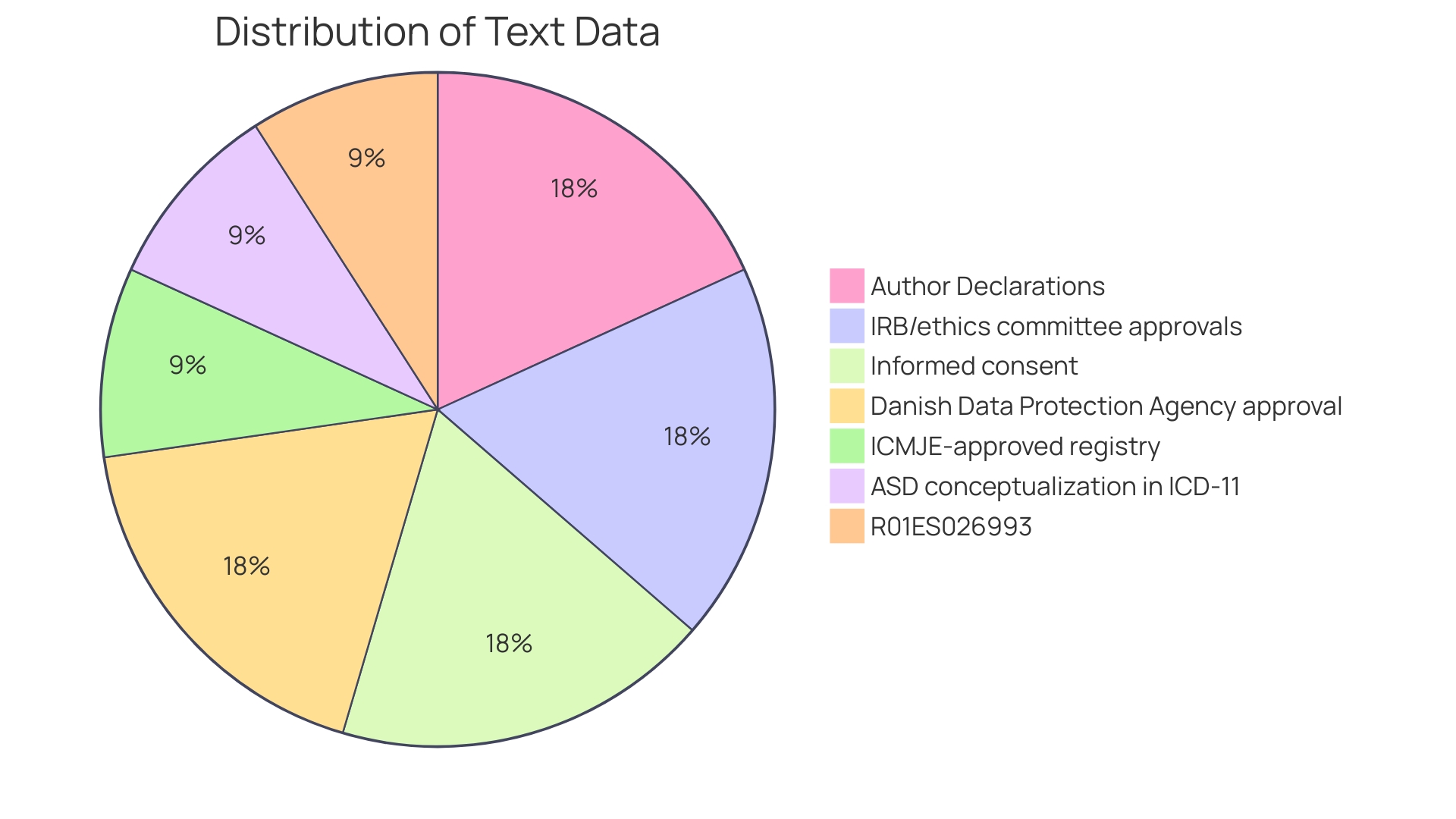
Importance of Accurate Autism Spectrum Testing
Understanding the intricacies of autism spectrum disorders (ASD) is a dynamic and evolving field, with recent technological advancements enhancing the accuracy of ASD identification in adolescents. The development of innovative tools like the Sense to know app, created by Duke University professors Geraldine Dawson and Guillermo Sapiro, represents a significant leap forward. This app utilizes a tablet to show short films designed to trigger behaviors associated with autism, such as changes in social attention, facial expressions, and motor movements.
The child's reactions are captured and analyzed using computer vision, and an AI algorithm then classifies the behaviors, providing a quantitative confidence level for the diagnosis.
In conjunction with traditional methods outlined in the DSM-5, which rely on caregiver reports and professional observations, these modern approaches offer a more nuanced understanding of ASD. Studies in leading autism centers have employed devices that track children's eye movements while viewing social scenes, with algorithms comparing these patterns to neurotypical peers. Such technology has reached an impressive 98.5% accuracy rate in diagnosing autism.
Despite these innovations, challenges persist, as approximately 30% of young children's autism diagnoses involve some level of uncertainty. This uncertainty can delay access to crucial early intervention services.
Statistics reveal that while many parents notice developmental concerns before their child reaches two years old, the median age for an autism diagnosis in the U.S. is between four and five years. This gap highlights the importance of early and accurate testing to provide timely support and maximize the potential for individuals with ASD. By embracing both established and emerging diagnostic tools, parents, educators, and healthcare professionals can craft personalized interventions that address the diverse needs and strengths of teens with ASD, ultimately supporting their journey towards achieving their full potential.
Types of Autism Spectrum Testing
Professionals employ a variety of autism spectrum assessments to evaluate individuals for Autism Spectrum Disorder (ASD). These evaluations often encompass behavioral analyses, discussions with parents and caregivers, and norm-referenced tests. The objective is to accumulate detailed insights into an individual's social interaction, communication aptitudes, and behavioral tendencies to facilitate a precise diagnosis.
While the spectrum is defined by a range of behaviors and affects people differently, early identification is pivotal for accessing beneficial resources. Autism is observed in as many as 1 in 36 individuals, according to the CDC. It manifests through persistent differences in communication and social interaction across various settings, including restricted and repetitive patterns of behavior or activities.
Brain scans have shown structural differences in individuals with autism, underscoring the importance of understanding these variations.
While the community acknowledges the value of self-diagnosis, particularly when formal testing can yield inconclusive results, some opt for official diagnoses to substantiate their experiences and to help others in their lives understand and accept their condition. The importance of an accurate diagnosis is echoed by organizations such as The Autism Community in Action (TACA), which emphasizes that early treatment like behavioral therapy can significantly enhance outcomes for children. Innovative diagnostic tools, like those being developed by companies such as NeuroQure, aim to identify ASD as early as a few weeks after birth, potentially reducing the often lengthy and arduous journey to diagnosis.
The complexities of autism diagnosis and support are multifaceted and extend to education and inclusion, which are critical for nurturing the potential of individuals with ASD. In Australia, for example, a comprehensive evaluation by a multidisciplinary team is standard practice, with the National Disability Insurance Scheme (NDIS) playing a crucial role in providing early intervention and support. Such early intervention programs concentrate on communication, social skills, and behavior management, enhancing a child's development and functioning.
Overall, the focus on early and accurate diagnosis, backed by supportive interventions and educational inclusion, is key to fostering the well-being and independence of individuals with ASD.
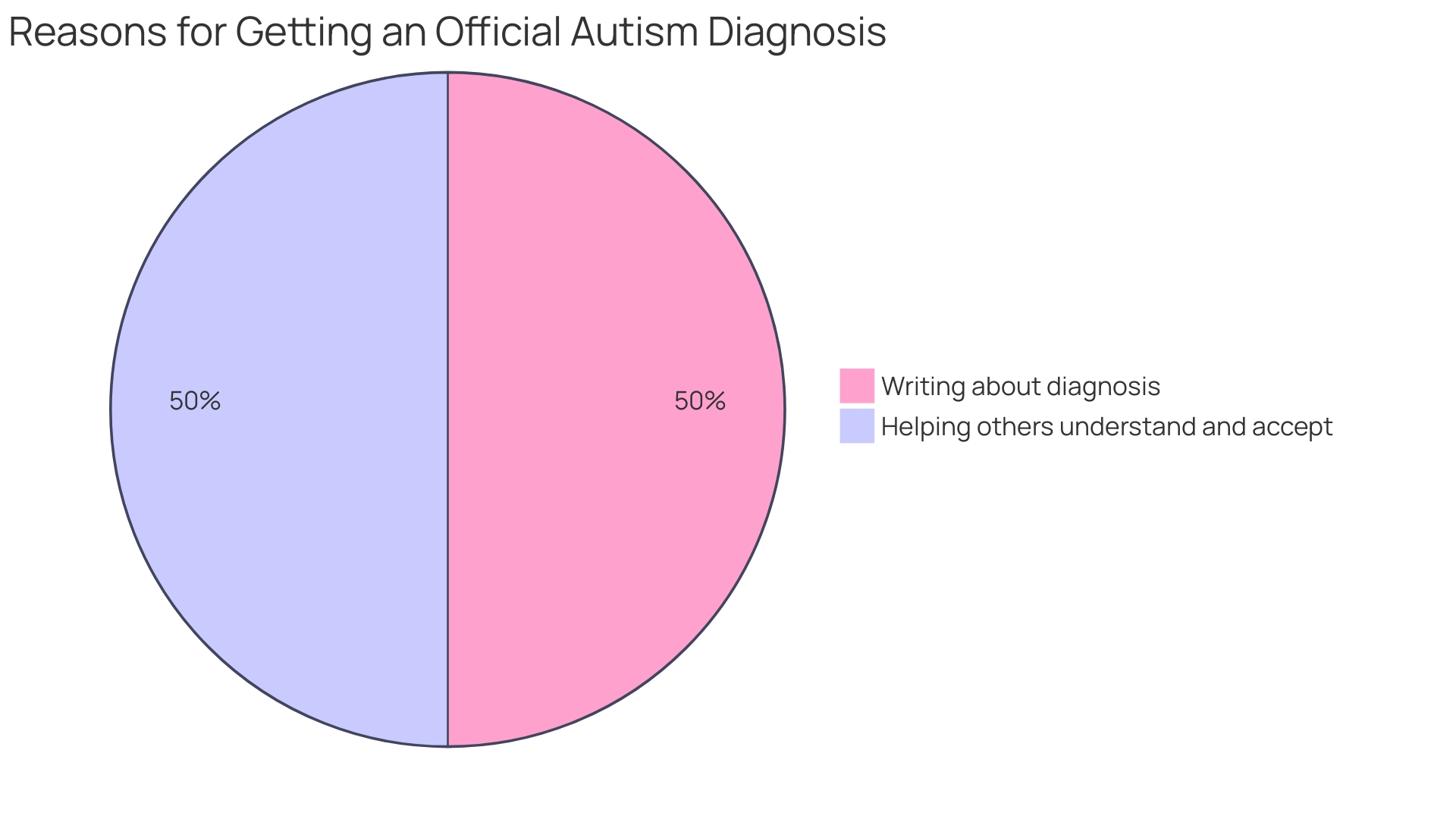
Characteristics and Administration of Screening Tests
Healthcare professionals, educators, and trained clinicians employ screening tests to identify young individuals who may present characteristics of ASD and could benefit from further evaluation. These initial screenings are pivotal, involving a set of questions or activities designed to evaluate behaviors, communication abilities, and social interaction skills. While these screenings do not provide a definitive diagnosis, they serve as an essential step in the early detection process.
Conducted in a variety of environments, from schools and clinics to the comfort of one's home, these tests aim to recognize early signs of ASD, thereby facilitating interventions that can significantly improve outcomes. It's understood that the earlier interventions such as behavioral therapy are initiated, the more favorable the long-term prospects for the child. In light of this, organizations like The Autism Community in Action (TACA) and innovative biotech companies like NeuroQure are tirelessly working to identify ASD as soon as possible to curtail the often lengthy and stressful journey towards diagnosis and to implement effective support and treatment strategies.
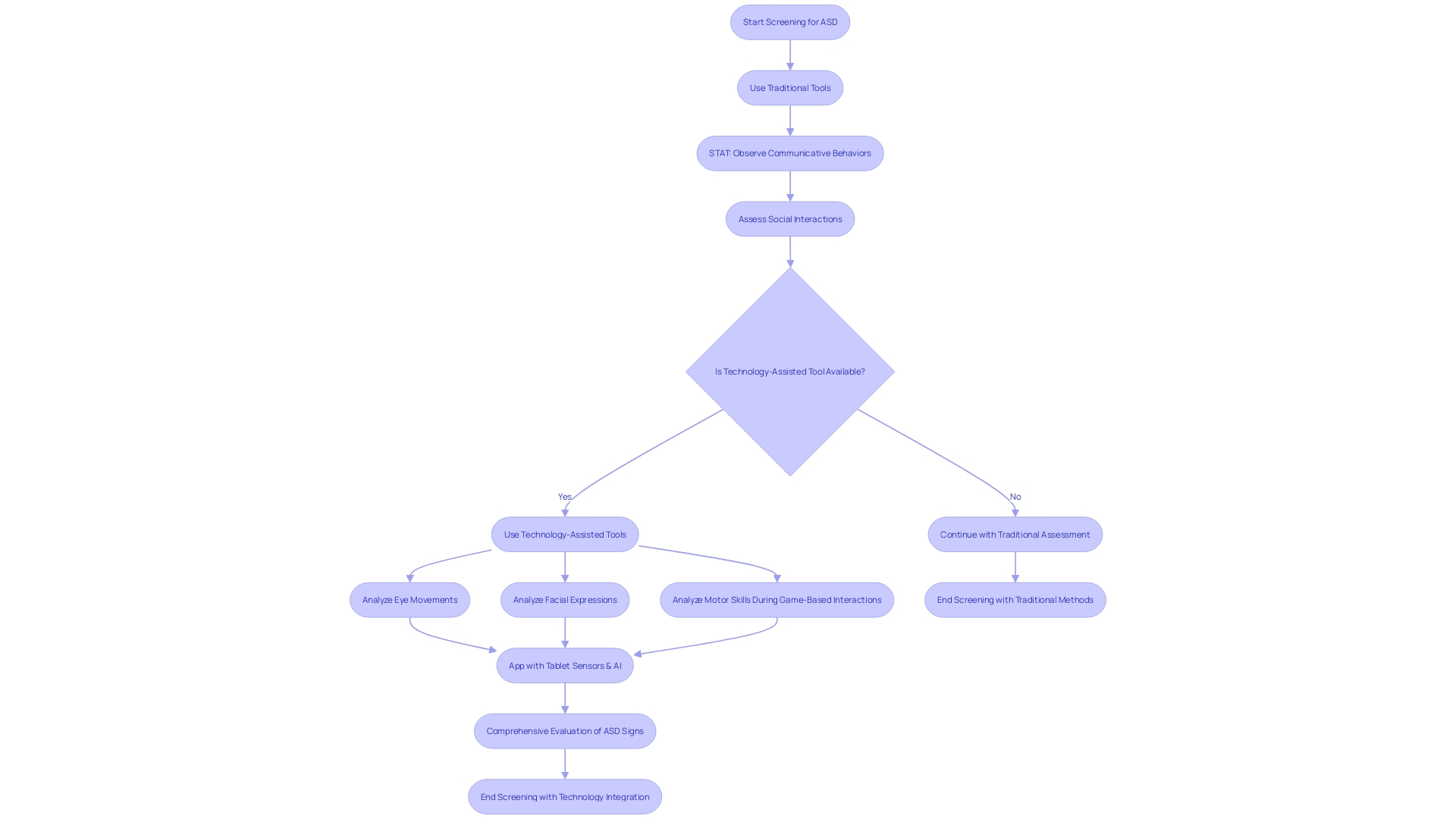
Psychometric Properties of Common Screening Tools
Screening tools for autism spectrum disorder (ASD) are central to the diagnostic process, which hinges on the expertise of clinicians as well as the input from parents or caregivers. These tools, backed by the American Psychiatric Association's DSM-5 criteria, are not standalone diagnostics but form part of a holistic assessment that includes careful observation of a child's behavior and developmental history as reported by caregivers. With 30% of parents noting developmental concerns by a child's first birthday, and 80% by the age of two, the stakes are high for accurate and timely diagnosis, yet the median age of diagnosis in the U.S. still lags at 4 to 5 years.
Delays not only place a strain on families but also heighten the risk of additional health issues.
In response to this critical need for efficiency and objectivity in ASD diagnosis, recent technological advances have been made. For instance, studies have shown that digital biomarkers, collected through user-friendly applications, can supplement traditional methods by providing real-time, ecological data from a child's home environment. These innovative approaches aim to refine the diagnostic process and are subject to ongoing research and validation to ensure their effectiveness.
One such promising development involves automated measures of a child's gaze patterns while watching videos of social interactions. With an eye-tracking precision of 120 times per second, this method has undergone rigorous testing across multiple clinical studies, including a multi-site trial with over 1,000 two-year-old children. The technology has demonstrated an impressive potential to predict ASD diagnosis with a high degree of accuracy, as confirmed by expert clinicians.
This fusion of traditional screening tools with cutting-edge technological advancements represents a significant leap forward in ASD assessment. It not only offers the promise of earlier diagnosis and intervention but also underscores the importance of continuous innovation and transparent communication among developers, clinicians, and the scientific community to enhance the reliability and validity of these essential diagnostic instruments.
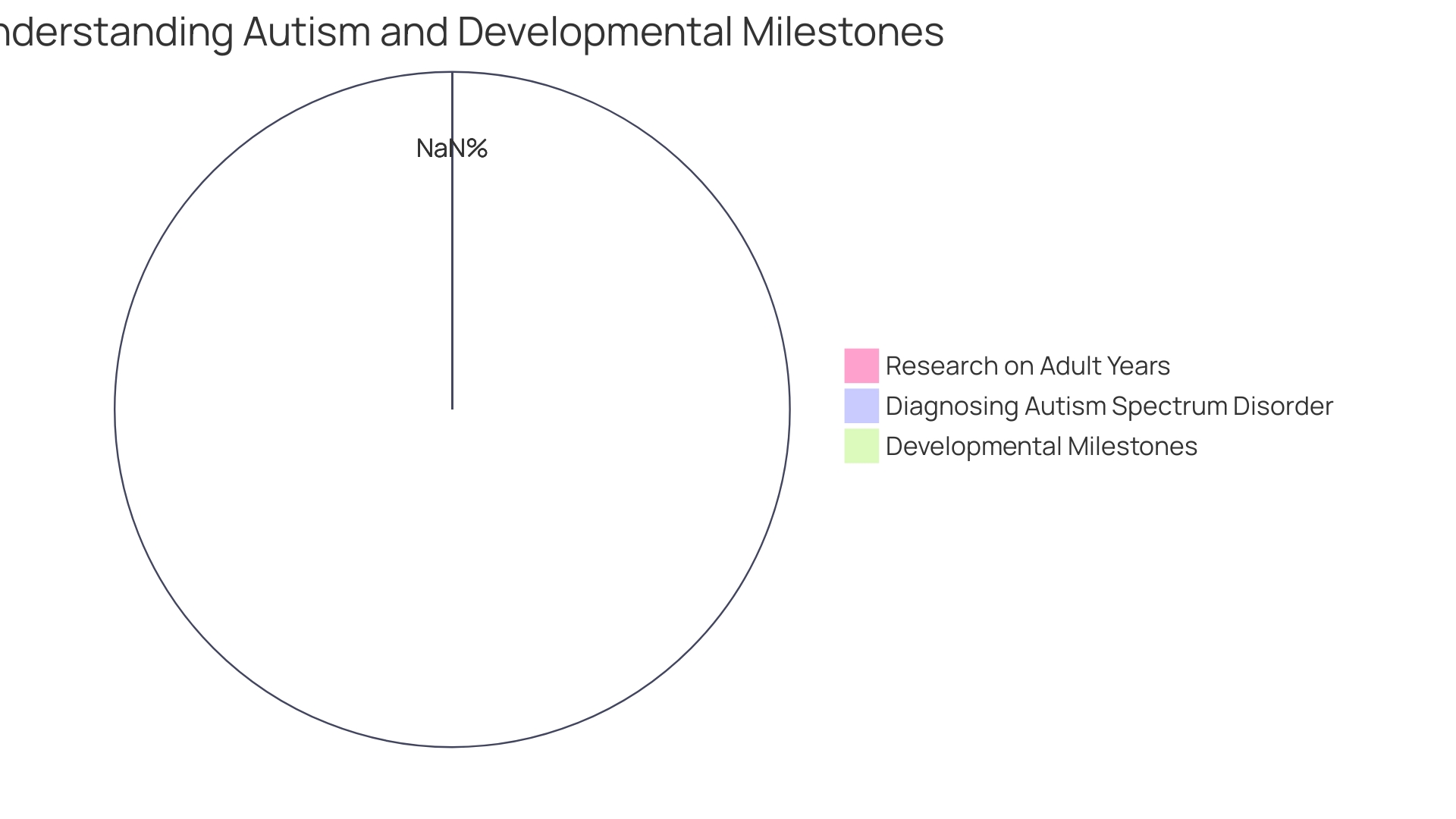
Age-Specific Screening Tests for Teens
Adolescence brings its own set of developmental milestones and challenges, and for teens on the autism spectrum, these can be particularly nuanced. Screening tests for Autism Spectrum Disorder (ASD) are adapted to align with these unique considerations, ensuring a focus on the social, communication, and behavioral indicators that are vital during the teenage years. This approach is underpinned by a commitment to early intervention, which has been shown to significantly improve outcomes for individuals with ASD.
With the understanding that each child's journey is distinct, these screenings are a critical step in identifying needs and providing the right support at the right time.
Recent advancements in diagnostic technologies have offered promising results in the early detection of ASD. Studies, such as those published in JAMA Network Open, reveal the potential of automated measures like the analysis of eye movements during social interactions to predict diagnostic outcomes. This innovative approach has undergone rigorous testing across multiple sites and has been shown to achieve impressive accuracy rates.
Such breakthroughs not only underscore the importance of tailored assessments across different age groups but also exemplify the continuous evolution of tools available to specialists in the field of autism diagnosis and treatment. As we push the boundaries of our understanding, it's clear that the commitment to early and accurate diagnosis remains a cornerstone in supporting the long-term well-being of adolescents with ASD.
Parent and Clinician Roles in Screening
The collaborative effort between parents and healthcare professionals is paramount when navigating the path to an autism spectrum disorder (ASD) diagnosis. Parents are a crucial source of insights, sharing observations of their teen's developmental milestones and behavior patterns, which are integral to a thorough assessment. Healthcare professionals, equipped with tools like the American Psychiatric Association's Diagnostic and Statistical Manual, Fifth Edition (DSM-5), interpret this information, along with their direct observations, to guide the diagnostic journey.
With the goal of fair and supportive participation in all areas of life for children with disabilities, it's essential to acknowledge the unique contributions and needs of each child. Pioneering diagnostic technologies, such as those developed by NeuroQure, aim to shorten the often lengthy process to diagnosis, with some studies suggesting that precise measurements of a child's gaze could predict diagnostic outcomes. This innovative approach promises a new horizon for early and effective intervention, aligning with Dr. Offord's vision of equity, where every child can partake in life's race on fair terms.
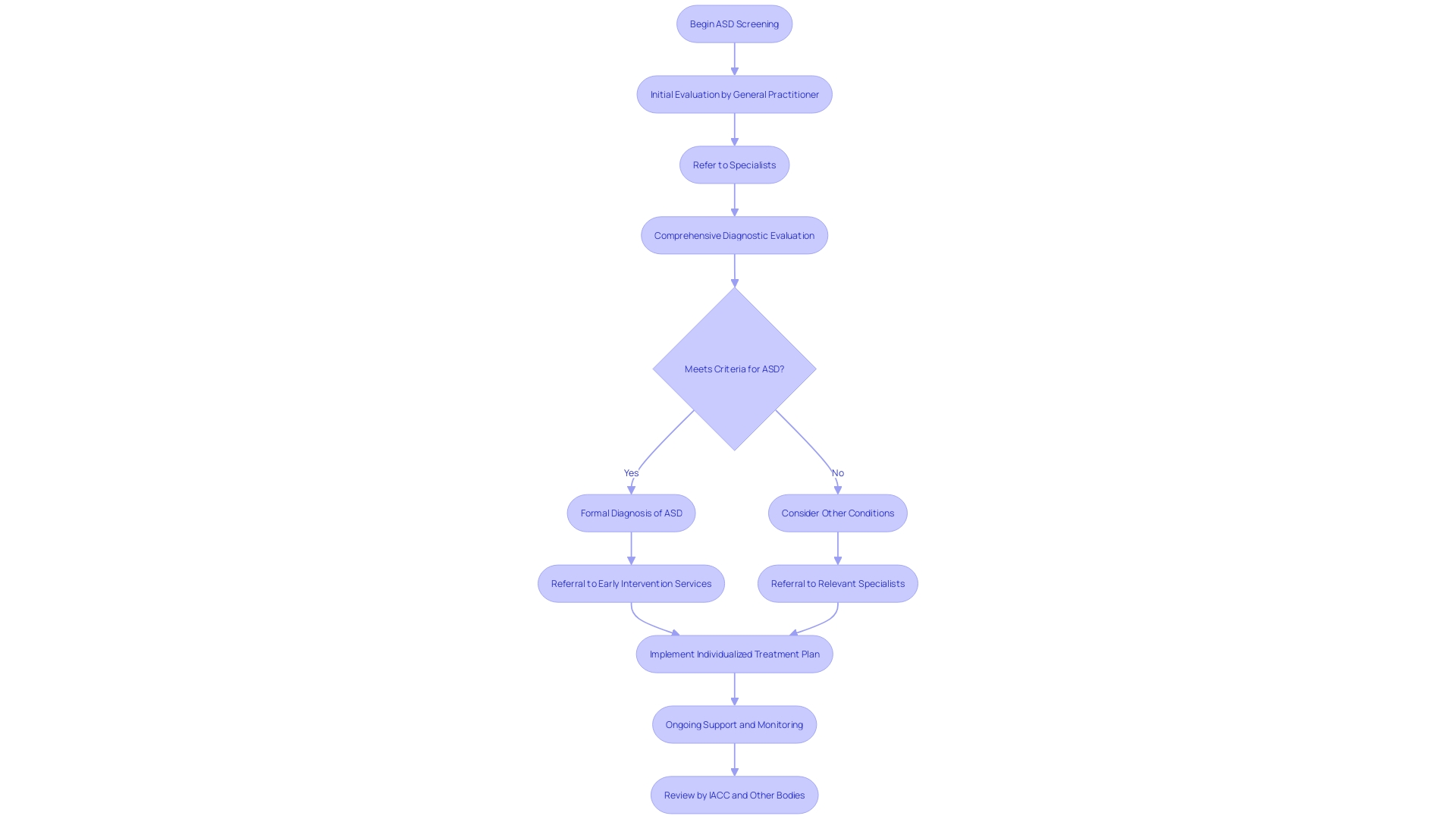
Common Screening Tools and Their Details
Professionals use a variety of tools to evaluate autism spectrum disorder (ASD), focusing on social communication and interaction skills. Among these, the Autism Diagnostic Observation Schedule (ADOS) is a structured assessment that involves social and play-based activities to observe the behaviors typical of ASD. Similarly, the Social Communication Questionnaire (SCQ) offers a parent-report measure that screens for ASD based on communication skills and social functioning.
The Childhood Autism Rating Scale (CARS) is also employed, which measures the severity of autism based on observation and scoring across 15 areas.
These tools are part of a comprehensive approach to autism testing. Diagnosis often begins with caregiver insights and observations by professionals, in line with the DSM-5 criteria. However, the diagnostic process is nuanced, as seen in a study across six sites with 496 young children where only 70.2% of the diagnoses were made with high certainty, highlighting the challenge in identifying ASD early on.
This challenge is compounded by the fact that while many parents notice developmental concerns by the time their child is 18 months old, the average age of diagnosis in the United States is between 4 to 5 years. Early detection is critical, as it opens doors to behavioral therapies that have been proven to enhance language, cognitive, and social skills. Innovations in the field, such as those from NeuroQure, aim to shorten the diagnostic journey, using technologies like automated devices that monitor children's eye movements to predict diagnostic outcomes.
With such advancements, the goal is to provide families with timely and accurate diagnoses, allowing for earlier intervention and better outcomes for children with ASD.
Cultural Considerations in Autism Spectrum Testing
Autism Spectrum Disorder (ASD) is a complex condition that presents through diverse behaviors and affects individuals to varying degrees. Recognized globally, ASD transcends ethnic, racial, and socioeconomic boundaries, and while it's not exclusive to any specific demographic, there's a pressing need for more culturally responsive assessments. Behavior, communication styles, and social interactions can be influenced by cultural background, which is essential to consider for a valid and meaningful evaluation process.
In light of the fact that ASD was once considered a predominantly Western phenomenon, there is a growing body of research and literature that highlights its presence worldwide. The National Institute of Health defines ASD as neurodevelopmental disorders caused by brain differences, affecting how individuals communicate and behave—a definition supported by the Diagnostic and Statistical Manual of Mental Disorders (DSM-5). These differences in communication styles are crucial when considering cultural sensitivity in autism assessment.
Statements from experts such as Abbeduto stress the importance of moving beyond mere diagnostic categories and taking into account the multifaceted identities of individuals with disabilities. This includes their cultural background, which can significantly impact life experiences and outcomes. The notion that 'you have autism, so you need assistance' is increasingly being challenged, urging a shift towards a more nuanced understanding that respects individual differences.
Supporting this perspective, the Interagency Autism Coordinating Committee (IACC) works to enhance coordination and communication across the federal government and engage with the autism community. The Committee's diverse make-up, including officials, autistic adults, family members, and other stakeholders, ensures that multiple viewpoints are considered in their recommendations.
In terms of prevalence, the Centers for Disease Control and Prevention (CDC) estimates that as many as 1 in 36 individuals may be on the autism spectrum. Diagnosing ASD involves a comprehensive assessment by a multidisciplinary team, and while there are no age restrictions for diagnosis in countries like Australia, early detection is key to better outcomes. The National Disability Insurance Scheme (NDIS) in Australia exemplifies this approach by providing funding for early intervention services tailored to individual needs.
Education and inclusion remain pivotal in nurturing the potential of individuals with ASD. With an estimate of 1 in 70 Australians on the autism spectrum, the nation has seen a rise in awareness and understanding, though challenges persist in diagnosis, intervention, and societal acceptance.
Incorporating cultural considerations into autism assessments is not just about accuracy; it's about respecting the full spectrum of diversity within the autism community. Such an approach is essential for equipping individuals with ASD with the resources and opportunities they need to thrive.
Clinical Implications and Next Steps After Screening
Navigating the journey after an autism spectrum testing involves critical steps. If the preliminary screening for a teen suggests the presence of autism, it's essential to seek further assessment by professionals who specialize in developmental disorders. These experts, including neurodevelopmental pediatricians and child neurologists, employ a comprehensive approach that may entail detailed interviews, behavioral observations, and interaction assessments.
The DSM-5, a recognized manual for psychiatric diagnoses, sets forth specific criteria to support these evaluations.
However, the process isn't infallible. In a study involving 496 young children referred for specialized assessment, about 30% of the cases faced diagnostic uncertainty. This suggests the nuanced nature of autism and the importance of tailored assessments, especially for children with subtle autism-related behaviors or higher cognitive abilities who may otherwise be overlooked.
Once a diagnosis is confirmed, it acts as a gateway to vital early interventions. These therapeutic strategies are designed to enhance language, cognitive, and social skills, and have proven to be more effective the earlier they commence. Organizations like The Autism Community in Action (TACA) emphasize the transformative potential of early treatment and advocate for expedited diagnostic tools to meet the urgent needs of children and their families.
With the advancements in technology, such as those pioneered by NeuroQure, the diagnostic process may soon be accelerated, allowing for interventions to begin shortly after birth rather than after a protracted and stressful period of uncertainty. Research from JAMA Network Open also underscores the promise of novel automated devices that analyze children's visual engagement and predict diagnostic outcomes, potentially revolutionizing how we identify autism at the earliest stages.
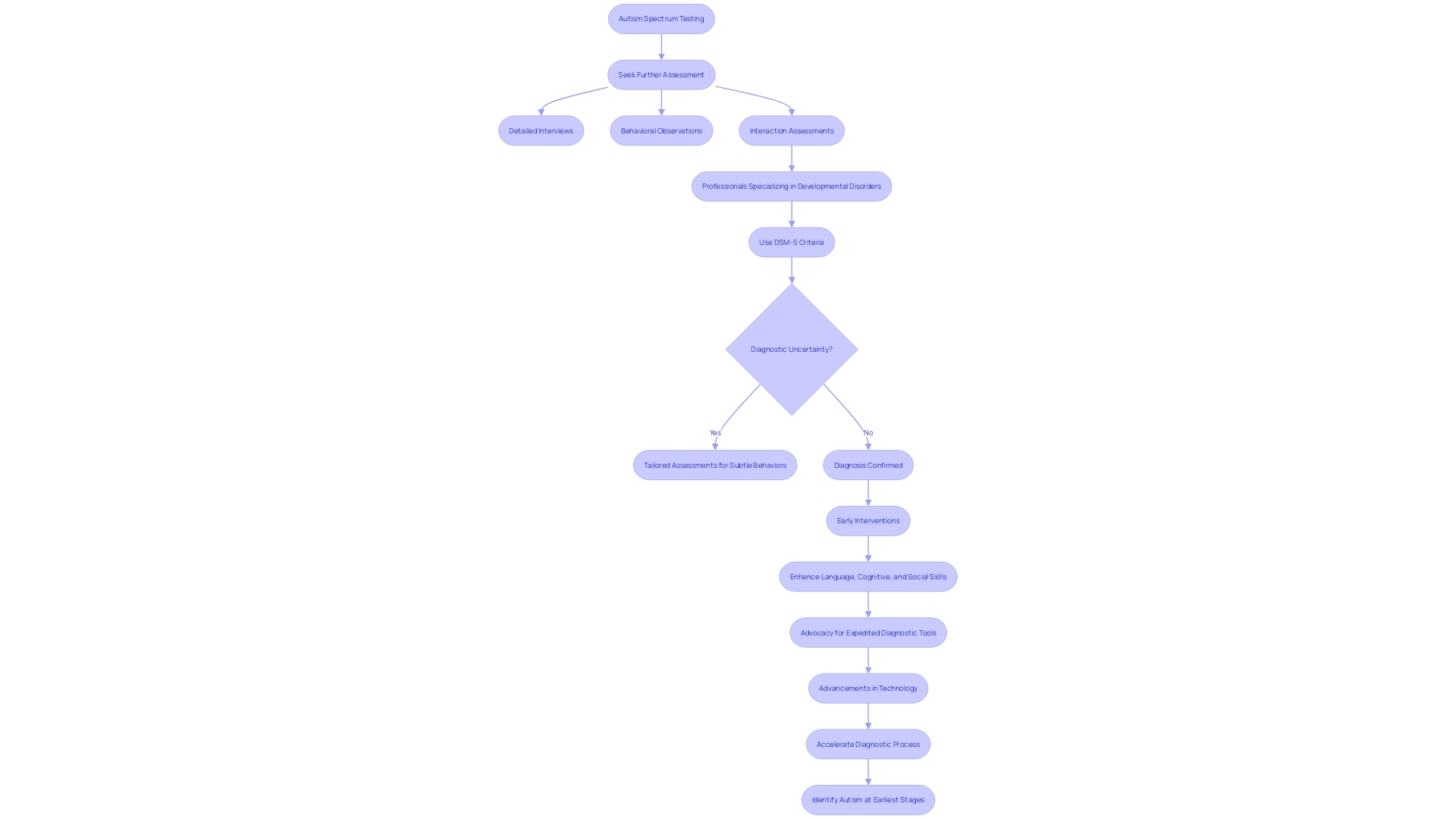
Conclusion
In conclusion, Autism Spectrum Disorder (ASD) is a complex condition that impacts behavior, communication skills, and social interactions. Early detection and intervention are crucial for individuals with ASD to thrive.
Artificial intelligence (AI) offers promising advancements in early diagnosis through tools like the SenseToKnow app and eye movement analysis. These innovations can lead to earlier interventions and improved outcomes for children with ASD.
Raising awareness and educating the community about ASD is essential. Accurate testing and the involvement of parents and clinicians in screening are key for a precise diagnosis.
Cultural considerations are important in ASD assessments to ensure a valid evaluation process that respects individual differences. Understanding the influence of cultural background on behavior and communication styles is crucial for supporting individuals with ASD.
Seeking further assessment from professionals specializing in developmental disorders is necessary after screening. Early interventions play a vital role in enhancing language, cognitive, and social skills.
By embracing these insights and utilizing diagnostic advancements, parents, educators, and healthcare professionals can navigate the challenges of ASD and ensure the well-being of individuals with ASD. Together, we can empower Parent Advocates to support their children and provide the resources needed for them to thrive.




